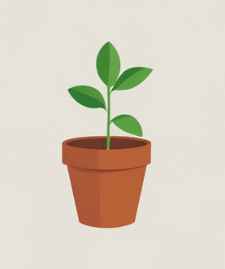The Garden Tower 2 is built to last — but like any garden system, a little regular maintenance goes a long way. Whether you’re growing veggies on a balcony, patio, or small backyard, keeping your system clean and healthy will make sure your plants (and worms!) stay happy.
I’ve gathered the key maintenance tasks based on the experiences of users, expert tips, and my own research. Luckily, none of them are hard — and they’ll save you time and stress in the long run.
🧼 1. Keep the Compost Tube Clear
The central composting tube is a brilliant feature, but it can get clogged if scraps pile up too quickly or if moisture levels are off.
Check every 1–2 weeks:
- Stir contents gently with a stick or small garden fork
- Add shredded paper or cardboard if it’s too wet
- If scraps aren’t breaking down, slow down your feeding
If worms are active, they’ll take care of most of the work — just help keep things balanced.
🚿 2. Clean the Base Drawer
The Garden Tower 2 collects liquid (compost tea) in the base. This can be a great fertilizer — but if it builds up too much or smells, it needs a rinse.
Every few weeks:
- Pull out the drawer and pour the liquid onto your plants
- Rinse with water to avoid mold or blockages
- Leave it slightly open now and then to air out
Tip: if the liquid smells bad, your compost mix may be too wet or unbalanced.
🪴 3. Refresh the Soil Every Season
Your plants are drawing nutrients from the soil — and over time, that soil can get compacted or tired.
At the end of each growing season:
- Remove some of the old soil from each pocket
- Mix in compost, worm castings, or fresh organic potting mix
- Loosen compacted soil with your fingers or a hand fork
If you’re using the system year-round, do a partial refresh instead of a full one.
🧱 4. Rotate the Tower Regularly
One of the clever design features of the Garden Tower 2 is its ability to rotate — letting you adjust sun exposure and access all sides easily.
Check rotation monthly:
- Make sure the base turns smoothly
- Remove any debris or buildup around the base
- If stiff, add a bit of food-safe lubricant to the turning plate
Regular rotation helps ensure even plant growth and easier watering.
🧯 5. Watch for Pests and Mold
Vertical systems can reduce pest problems — but they’re not immune.
Check for:
- Aphids or whiteflies (spray with water or neem oil)
- Mold near compost tube (adjust moisture and airflow)
- Slugs near the bottom levels (use traps or barriers)
Healthy soil and good airflow are your best defences.
🪴 Keep the Compost System Flowing Smoothly
The Garden Tower 2 has a built-in screen at the bottom of the compost tube — it’s designed to keep worms inside and help finished compost collect in the drawer below.
Every so often, it’s worth checking that the screen isn’t blocked by soggy compost or plant debris. A quick poke with a stick or small trowel is usually all it takes to keep everything running smoothly.
🧑🔧 6. Inspect for Wear and Tear
The Garden Tower 2 is durable, but after a few seasons, parts may need tightening or cleaning.
Once or twice a year:
- Check the stacking rings and planting pockets for cracks
- Wipe down the exterior with a damp cloth
- Inspect the central tube and screen for blockages
Replacement parts are available — but most users report years of use with no major issues.
✅ Final Thoughts
The Garden Tower 2 doesn’t take much maintenance — just a little attention here and there. A quick check every week or two can prevent bigger problems and keep your system in top shape.
For me, the low-maintenance design is part of what makes this system such a winner for small-space gardeners. It’s simple, smart, and gets better over time.
